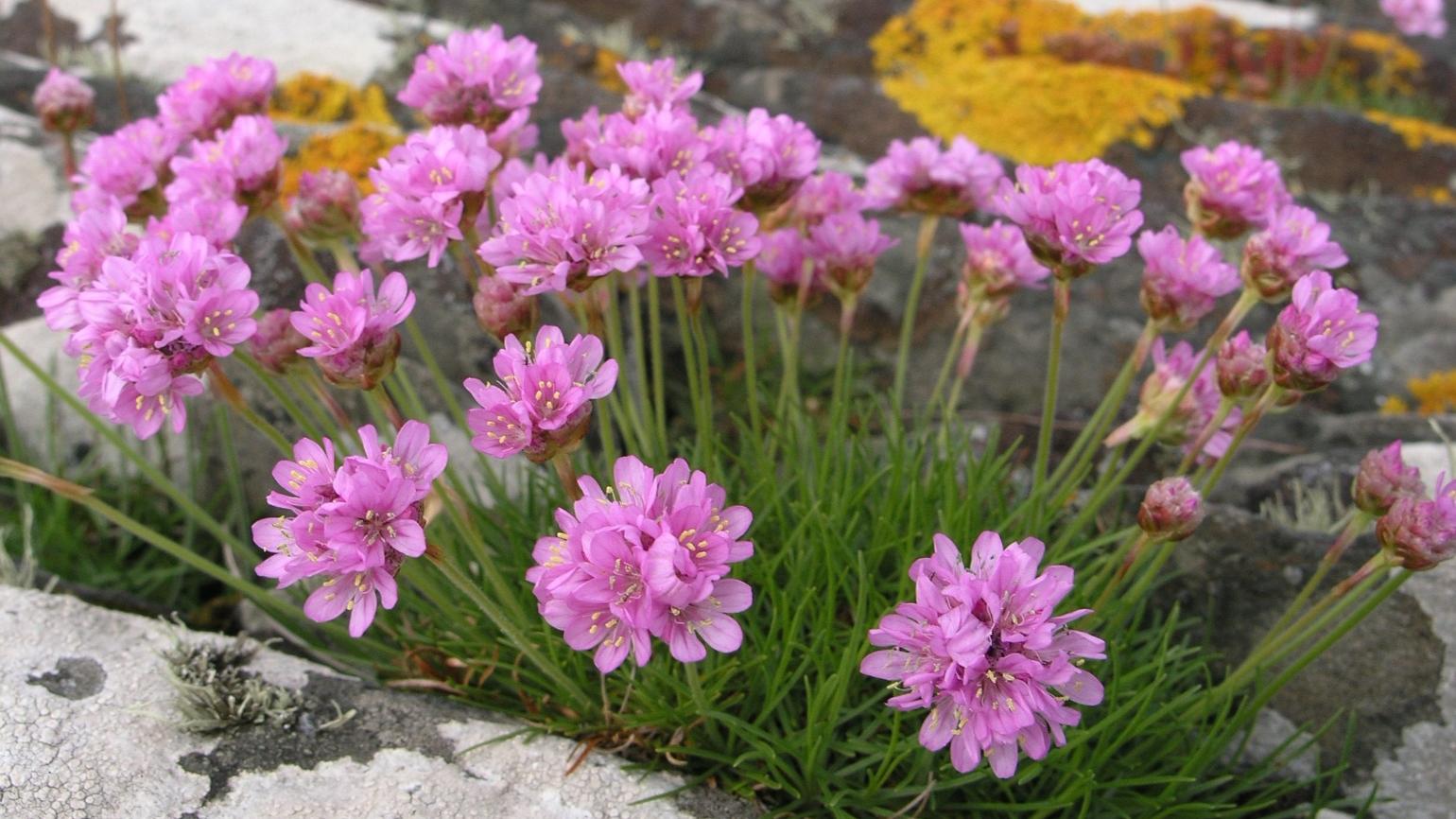
Armeria, also known as sea thrift or sea pink, is a fascinating plant that is native to coastal regions around the world. With its delicate flowers and sturdy grass-like leaves, Armeria is a popular choice for gardens, coastal landscapes, and even rock gardens. But there’s more to this plant than meets the eye. In this article, we will explore 20 astonishing facts about Armeria that will surely captivate your interest and deepen your understanding of this remarkable plant species. From its historical uses to its ecological significance, Armeria holds a wealth of knowledge waiting to be discovered. So, let’s dive in and uncover the secrets of Armeria!
Key Takeaways:
- Armeria, also known as Sea Thrift, is a colorful and resilient plant native to coastal regions. It attracts bees and butterflies, making it a great choice for eco-friendly gardens.
- With its vibrant flowers and drought tolerance, Armeria is a versatile and long-lasting plant that adds beauty to gardens and landscapes. It’s perfect for rock gardens, borders, and even coastal landscaping.
Armeria, also known as Sea Thrift, is a perennial flowering plant.
With its vibrant pink or white flowers, Armeria adds a splash of color to gardens and landscapes.
Armeria is native to coastal regions of Europe, Asia, and North America.
This resilient plant thrives in sandy and rocky soils near the seaside.
The name “Armeria” is derived from the Latin word “arma,” which means armor.
This name refers to the tough and protective foliage of the plant.
Armeria blooms from late spring to early summer.
During this time, its flower stalks rise above the foliage, creating a beautiful display.
The flowers of Armeria are highly attractive to bees and butterflies.
They serve as a valuable source of nectar for pollinators.
Armeria plants are known for their drought tolerance.
They can withstand dry conditions and are an excellent choice for xeriscaping.
Armeria comes in various cultivars, including ‘Rubrifolia,’ ‘Alba,’ and ‘Splendens.’
Each cultivar offers unique characteristics and colors.
In traditional medicine, Armeria has been used to treat respiratory ailments.
Its leaves were brewed into teas believed to alleviate coughs and congestion.
Armeria has a low-growing, compact form, making it suitable for rock gardens and borders.
It adds texture and visual interest to these areas.
The leaves of Armeria are narrow and grass-like in appearance.
They form neat clumps that remain attractive throughout the year.
Armeria can also be grown in containers and used as a focal point in patio gardens.
Its compact size and colorful flowers make it a popular choice for potting.
Armeria plants prefer full sun to partial shade.
They thrive in locations with at least six hours of direct sunlight per day.
The flowers of Armeria can be cut and used in floral arrangements.
Their long-lasting blooms add beauty to bouquets and centerpieces.
Armeria plants require well-drained soil to prevent root rot.
They do not tolerate soggy or waterlogged conditions.
Armeria is often used in coastal landscaping due to its ability to withstand salt spray.
It adds color to beachside gardens and can tolerate the harsh coastal environment.
The seeds of Armeria are small and can be easily sown in the garden or started indoors.
They germinate within a few weeks and grow into attractive plants.
Armeria is a popular choice for eco-friendly and sustainable gardens.
Its low water requirements and ability to attract beneficial insects make it environmentally friendly.
Armeria plants have a long lifespan, often surviving for several years.
With proper care, they can become a permanent fixture in gardens.
Armeria is a versatile plant that can be used as groundcover, edging, or in mixed perennial beds.
It provides a burst of color and texture wherever it is planted.
The cultivation of Armeria dates back centuries, with references found in ancient texts and botanical illustrations.
Its enduring popularity is a testament to its beauty and resilience.
Conclusion
Armeria, also known as sea thrift or sea pink, is a fascinating plant with many surprising facts. From its ability to thrive in coastal and rocky environments to its unique flower shapes and colors, Armeria is a true wonder of nature. Its adaptability, medicinal properties, and symbolic meanings make it even more intriguing.
Whether you’re a gardening enthusiast, a nature lover, or just someone looking to learn something new, exploring the world of Armeria can be both educational and enjoyable. So next time you come across this amazing plant, take a moment to appreciate its beauty and remember these astonishing facts!
FAQs
Q: What is the ideal growing environment for Armeria?
A: Armeria thrives in coastal areas with well-drained soil and full sun exposure. It can also tolerate drought conditions and salty environments, making it an excellent choice for seaside gardens.
Q: How tall does Armeria grow?
A: Armeria typically grows up to 6-10 inches in height, depending on the specific variety. Some taller varieties can reach up to 12-15 inches in height.
Q: Do Armeria plants require a lot of maintenance?
A: Armeria is a low-maintenance plant that doesn’t require much care. It is drought-tolerant and does not require frequent watering. However, deadheading the flowers after they bloom can help promote continuous flowering.
Q: Can Armeria be grown in containers?
A: Yes, Armeria can be grown in containers as long as they have good drainage. Choose a compact variety to ensure it fits well in the container and provide it with ample sunlight and regular watering.
Q: Are there any specific medicinal uses for Armeria?
A: Armeria has traditionally been used for its medicinal properties, including treating respiratory ailments, soothing skin irritations, and promoting overall well-being. However, it is important to consult with a healthcare professional before using it for medicinal purposes.
Q: Does Armeria attract pollinators?
A: Yes, Armeria flowers are known to attract pollinators such as bees and butterflies. They are an excellent addition to any garden aiming to support pollinator populations.
Q: What do Armeria flowers symbolize?
A: Armeria flowers are often associated with love, devotion, and good fortune. They are commonly used in wedding bouquets and floral arrangements to symbolize eternal love and luck.
Q: Can Armeria be grown from seeds?
A: Yes, Armeria can be grown from seeds. Sow the seeds in well-draining soil, keep them moist until germination, and transplant the seedlings to their permanent location once they are strong enough.
Armeria's astonishing facts captivate plant enthusiasts and gardeners alike. Dive deeper into the world of this resilient flowering plant by exploring more astounding facts about Armeria and its close relative, Sea Pink. Uncover the secrets behind their hardy nature, stunning flower formations, and versatile uses in landscaping and traditional medicine. Embark on a journey of discovery as you learn about the fascinating characteristics that make Armeria and Sea Pink truly unique and cherished in gardens across the globe.
Was this page helpful?
Our commitment to delivering trustworthy and engaging content is at the heart of what we do. Each fact on our site is contributed by real users like you, bringing a wealth of diverse insights and information. To ensure the highest standards of accuracy and reliability, our dedicated editors meticulously review each submission. This process guarantees that the facts we share are not only fascinating but also credible. Trust in our commitment to quality and authenticity as you explore and learn with us.


